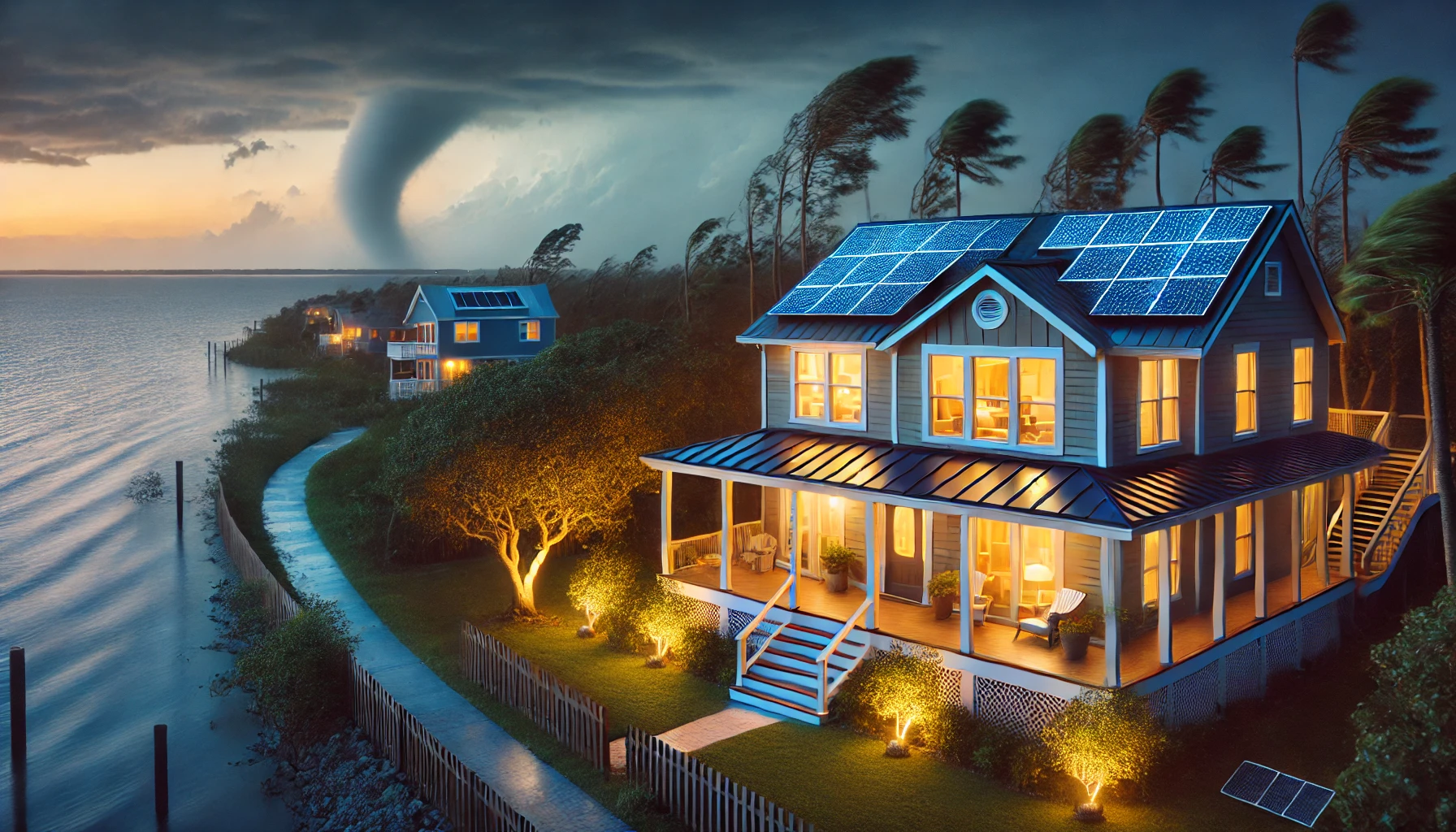
From Hurricane Sara to Solar Solutions Why Extreme Weather Events Call for Renewable Energy

Ethan Howard
Posted 11/13/2024
As Hurricane Sara bears down on Florida's coast, it serves as yet another reminder of the increasing frequency and intensity of extreme weather events. While meteorologists track this latest storm, it's worth examining how renewable energy solutions, particularly solar power, can help build resilience against these climate-driven challenges.
The Growing Storm Threat
Hurricane Sara joins a concerning pattern of unseasonable storms affecting the southeastern United States. Traditionally, hurricane season spans from June to November, yet we're seeing more activity outside these typical timeframes. This shift aligns with climate scientists' predictions about how global warming affects tropical storm systems.
Solar Power: A Double Win for Climate Resilience
Solar energy offers two crucial advantages in our changing climate:
- Immediate Resilience: During and after storms, decentralized solar systems with battery backup can keep critical facilities running even when the main power grid fails. Hospitals, emergency shelters, and essential services can maintain operations, potentially saving lives during crisis periods.
- Long-term Mitigation: By reducing our reliance on fossil fuels, solar power helps address the root cause of increasing extreme weather events – climate change itself. Every megawatt of solar power installed represents a step toward reducing the carbon emissions driving these dangerous weather patterns.
The Rise of Home Battery Solutions
The surge in extreme weather events has sparked unprecedented interest in home battery systems, with Tesla's Powerwall 3 leading the charge. This latest generation of home energy storage offers several key advantages:
Tesla Powerwall 3 Features
- Enhanced Capacity: With 13.5 kWh of usable energy storage, a single Powerwall 3 can power essential home systems for multiple days
- Storm-Ready Design: Built-in storm detection enables automatic preparation for extreme weather events
- Seamless Backup: Transition to backup power happens in less than 10 milliseconds – so fast that most electronics don't even reset
- Intelligent Power Management: Smart software prioritizes critical loads and extends backup duration during extended outages
Why Homeowners Are Making the Switch
Florida homeowners, particularly in hurricane-prone areas, are increasingly pairing solar installations with Powerwall 3 systems for several reasons:
-
Hurricane Preparedness: Unlike traditional generators, battery systems:
- Operate silently
- Require no fuel storage
- Start automatically when needed
- Can be monitored remotely via smartphone
-
Daily Cost Savings: Beyond emergency backup, these systems:
- Store excess solar production for evening use
- Take advantage of time-of-use electricity rates
- Reduce reliance on the grid during peak pricing periods
Learning from Recent Events
Florida's experience with previous hurricanes has already demonstrated solar's resilience benefits. During Hurricane Ian in 2022, several solar-powered communities maintained power while surrounding areas went dark. These success stories are driving increased interest in solar installations, particularly systems that include battery storage.
Making the Switch: From Reaction to Prevention
As we watch Hurricane Sara's development, the message becomes clear: we need to shift from merely reacting to storms to actively preventing their intensification through climate action. Solar power represents one of our most practical and immediate tools for this transition.
Taking Action
For homeowners and businesses in hurricane-prone regions, consider:
-
Evaluate Your Power Needs:
- Calculate your essential power requirements
- Determine how many Powerwall units you need
- Consider future needs (like EV charging)
-
Installation Planning:
- Work with certified Tesla installers
- Check local incentives and tax credits
- Review hurricane-specific installation requirements
-
Community Engagement:
- Join local solar co-ops for better pricing
- Share backup power during emergencies
- Advocate for renewable-friendly policies
Looking Forward
While Hurricane Sara reminds us of our vulnerability to extreme weather, it should also motivate us to accelerate our transition to renewable energy. Solar power paired with advanced battery storage isn't just about reducing electricity bills – it's about building a more resilient and sustainable future for storm-prone regions.
The time to act is now. As we track Hurricane Sara's path, let's remember that each solar panel and battery system installed is a significant step toward a more climate-resilient future.